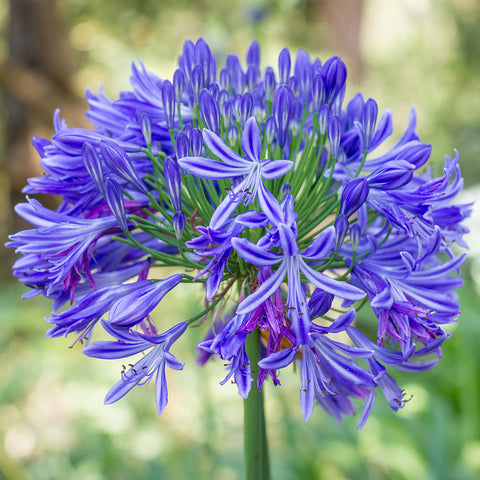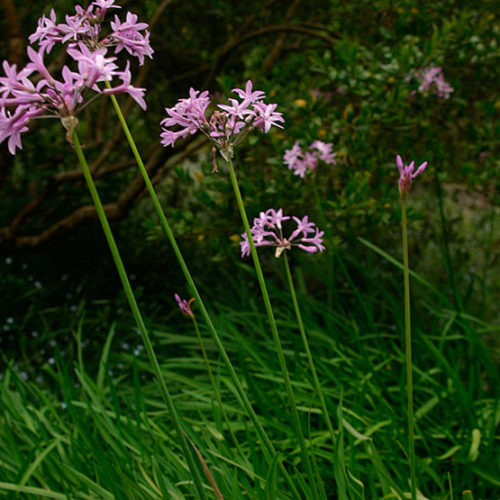Agapanthus Breeding: Tips for Expanding Your Plant Collection
Agapanthus Breeding: Tips for Expanding Your Plant Collection
Blog Article
Understanding the Art of Agapanthus Care: Vital Actions for Healthy And Balanced Growth and Lively Flowers
In the realm of horticulture, the growing of agapanthus stands as a rewarding venture for those that seek to nurture these sophisticated blooming plants. With their striking flowers and stylish foliage, agapanthus has captured the interest of gardeners worldwide. Nonetheless, achieving optimal growth and vibrant blooms requires a nuanced method that encompasses numerous essential steps. From picking the best selection to understanding trimming strategies, the journey in the direction of cultivating flourishing agapanthus plants is complex and holds the crucial to unlocking the full potential of these botanical gems.

Selecting the Right Agapanthus Range

When choosing the ideal Agapanthus range for your yard, take into consideration factors such as climate suitability, bloom color, and growth habit. In addition, take into consideration the environment in your region to ensure the Agapanthus variety you select can prosper in your particular conditions. Comprehending the development routine of different Agapanthus selections is essential for correct placement within your garden.
Suitable Planting Conditions
Considering the ideal ecological needs is crucial for effective Agapanthus growing. Agapanthus thrives in well-draining soil with a slightly acidic to neutral pH degree. When planting, pick an area that receives full sunshine to partial color. In hotter climates, providing some mid-day color can prevent scorching of the fallen leaves. Agapanthus plants are delicate to cool temperature levels and must be shielded from frost throughout winter season.
To ensure healthy and balanced growth and vivid flowers, plant Agapanthus light bulbs at a deepness of about 2-4 inches and room them 8-12 inches apart. Including raw material, such as garden compost, to the dirt can improve drain and fertility, promoting robust root advancement. Mulching around the base of the plants helps retain dampness and suppresses weed growth. Normal watering is crucial, specifically during the expanding season, to keep the dirt constantly wet yet not saturated.
Watering and Fertilizing Tips
Preserving proper dampness degrees and supplying vital nutrients are key elements in the care program for Agapanthus plants. When it concerns watering Agapanthus, it is vital to strike an equilibrium. If overwatered, these plants prefer continually damp dirt however are at risk to root rot. During the growing season, water deeply once a week, making certain the dirt is well-draining to stop waterlogging. In hotter climates or throughout periods of dry spell, even more regular watering may be essential to maintain the soil evenly moist. However, lower watering in the winter months to prevent water logged problems.
Feeding Agapanthus is important for advertising healthy and balanced development and respected blooms. Apply a well balanced fertilizer, such as a 10-10-10 formula, in the very early springtime as new development arises. By complying with these watering and fertilizing pointers, you can ensure your Agapanthus plants grow and produce lively, lasting blooms.
Pruning Methods for Agapanthus
Pruning Agapanthus plants at the suitable times and with appropriate techniques is important for preserving their health and advertising ideal development and flowering. The ideal time to prune Agapanthus is in late winter months or very early spring before look at here now brand-new growth emerges. Begin by eliminating any type of yellowing or dead fallen leaves learn the facts here now near the base of the plant. Cut them as short as feasible without harming the arising shoots.
For flowered stems, wait up until the flowers have withered and after that cut them back to the base. This not only cleans the plant's look but also motivates the growth of new flower buds. Deadheading invested blossoms can likewise reroute the plant's energy into creating even more blossoms instead of setting seeds. Nevertheless, if you wish to collect seeds for proliferation, leave some blossoms to mature and dry on the plant.
Remember to make use of tidy, sharp tools to make precise cuts and minimize the threat of presenting illness. Agapanthus. Normal pruning will certainly assist maintain your Agapanthus looking cool and healthy while making sure a bountiful display of attractive flowers
Taking Care Of Common Parasites and Illness
After making certain correct pruning strategies for Agapanthus, it is crucial to deal with typical pests and diseases that can impact the health and vitality of these plants. One typical insect that influences Agapanthus is the Agapanthus gall midget.
One more typical issue is fungal leaf spot, which offers as dark sores on the fallen leaves. To avoid fungal diseases, ensure excellent air blood circulation around the plants, stay clear of overhead watering, and get rid of any infected leaves promptly. Furthermore, Agapanthus plants can suffer from origin rot if they are planted in badly draining dirt. To stop this, plant Agapanthus in well-draining soil and avoid overwatering. By being alert and taking prompt action directory against pests and conditions, you can aid your Agapanthus plants flourish and generate vibrant flowers.

Verdict
In final thought, mastering the art of agapanthus care involves choosing the ideal range, giving suitable growing conditions, proper watering and feeding, appropriate pruning strategies, and addressing typical bugs and conditions. By following these important actions, you can guarantee healthy development and vibrant blooms for your agapanthus plants. Remember to consistently keep an eye on and preserve your plants to advertise their total health and durability.
To make sure healthy and balanced development and vibrant blossoms, plant Agapanthus bulbs at a depth of regarding 2-4 inches and area them 8-12 inches apart. By following these watering and feeding suggestions, you can guarantee your Agapanthus plants grow and produce lively, long-lasting flowers.
One common pest that affects Agapanthus is the Agapanthus gall midge. Additionally, Agapanthus plants can endure from root rot if they are planted in inadequately draining pipes soil. By complying with these crucial actions, you can guarantee healthy and balanced growth and lively blooms for your agapanthus plants.
Report this page